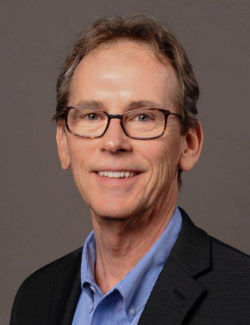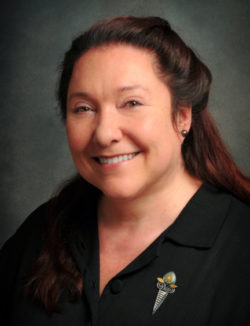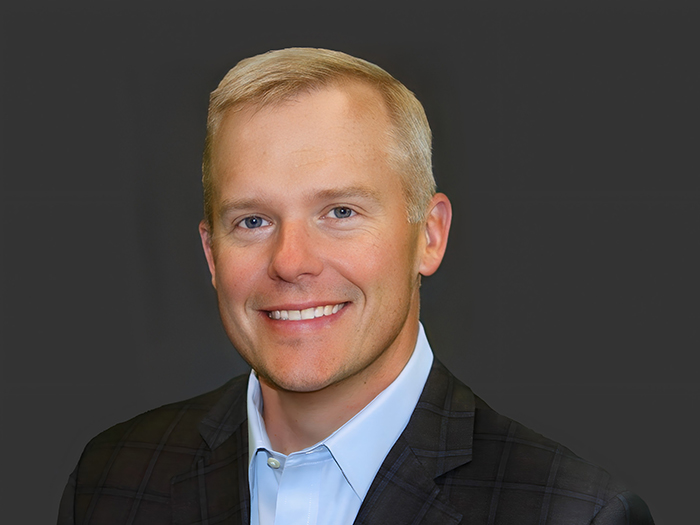Sponsored Content by Concentra
What It Takes to Choose the Right Occupational Health Provider

When it comes to choosing an occupational health advisor, it’s imperative that companies choose a team where the clinicians are educated in the discipline of occupational health.
In this round-table discussion, three Concentra physicians — Dr. John Anderson, chief medical officer; Dr. Latha Brubaker, vice president of medical operations; and Dr. Maja Jurisic, vice president, medical director of strategic accounts — delve into the importance of choosing an occupational health provider with clinicians who have been specifically trained in the field.
Risk & Insurance: What is the value for both employers and employees in having an occupational health clinician, versus an emergency physician, for example, treat a work-related injury?
John Anderson, DO FACOEM: Physicians trained in managing workers’ comp cases understand and appreciate the value of return to work and the many dynamics that can influence the outcome of a case. This training is not included in medical school curriculums, nor in residency training, with the exception of occupational medicine residencies.
Latha Brubaker, MD: In the same way you would choose a cardiologist to address a cardiac issue, you should choose an occupational medicine-trained clinician to take care of a work-related injury. The occupational medicine-trained clinician understands the medical aspect of work-related injuries as well as the injuries’ impact to the employee’s work performance and productivity.
Maja Jurisic, MD, CPE: I was an emergency physician for 11 years prior to joining Concentra. I was great at quickly evaluating injuries and coming up with an appropriate treatment plan. However, I knew nothing about managing the process of return to work, how important and beneficial it was to keep patients working in some capacity whenever medically possible, and how to write appropriate work restrictions. That’s not something you typically learn during medical training in fields other than occupational medicine.
As an emergency physician, I actually thought I was being “kind” to patients by taking them off work. It was the easiest and quickest thing for me to do, the patients were always very thankful to have the time off, and they often seemed to feel their employer “owed” it to them.
After I joined Concentra, I was horrified to learn that those times I had placed patients off work when it was not medically necessary, I had likely been promoting a disability mindset and potentially starting people down the path to delayed recovery.
Current estimates according to the AMA Guides to the Evaluation of Work Ability and Return to Work are that in 60% of the workers’ comp cases where injured workers are taken off work by physicians, it is not medically necessary.

Dr. John Anderson, Chief Medical Officer, Concentra
R&I: How does Concentra train clinicians without a background in occupational medicine to become occupational health providers?
LB: Every Concentra clinician completes a new hire learning plan. This plan includes a thorough review of key occupational medicine topics which will help them approach each patient with evidence-based care.
There are continued learning opportunities through periodic clinical presentations and discussions. Our clinicians have opportunities to complete additional coursework through Concentra’s Occupational Health University (OHU).
This internal program has three levels, and upon completion, the participant receives a certificate as well as the opportunity to share their knowledge with their peers.
R&I: How does the current workforce/workplace landscape impact the need for providers to be specifically trained in occupational health care?
LB: The modern workplace is complex and has many stakeholders, particularly when working in a regulated industry or managing an employee who gets injured on the job. Distrust can quickly develop with the employee, supervisor, or safety officer if there’s a misstep in the delivery of care. It not only takes clinical expertise but also a deep understanding of these complexities both to deliver optimal care to an employee and to meet the needs of the employer. The transparent communication of clear, useful data is something that modern stakeholders are demanding more often. As part of our commitment to best-in-class occupational health care, Concentra provides structured reporting, customizable data, automated alerts, and other tools directly to employers and payors for more efficient and effective case management. Taking things one step further, we also offer employers the opportunity to discuss the status of individual cases – including treatment plans, referrals, functional job descriptions, and more – directly with our clinicians.
MJ: Occupational medicine physicians understand the workplace and the dangers inherent in certain types of jobs. They are knowledgeable about the ongoing and long-term effects of toxins and can perform the surveillance exams necessary to monitor those who work with toxic substances in compliance with OSHA regulations. That keeps workers safe and productive while helping employers remain compliant.
The United States spends more money treating musculoskeletal disorders than any other condition. In 2016, we spent $380 billion — more than the money spent on heart disease and cancer combined — and the costs have been growing by 5% per year.
Clinicians trained in occupational health care can work with employers to improve safety, decrease musculoskeletal injuries, and implement solutions to keep musculoskeletal aches and pains from becoming OSHA recordable injuries. For example, having athletic trainers on site in the workplace to provide first aid — a service offered by Concentra — can keep a minor problem from becoming a major one.

Dr. Latha Brubaker, Vice President of Medical Operations, Concentra
R&I: What resources does Concentra use to ensure its clinicians remain up to date on the latest regulatory guidelines, industry-specific hazards, available technologies, and other trends in employee health and safety?
LB: Concentra has many subject matter experts (SMEs) in all aspects of occupational medicine, including Occupational Safety and Health Administration (OSHA) regulatory testing and examinations, Department of Transportation (DOT) examinations and certifications, injury care, and medical surveillance to name just a few. Our SMEs remain up to date on the latest recommendations for prevention and clinical treatment as well as the regulatory guidelines published by established health authorities.
MJ: Starting with orientation, we have a robust new hire learning plan that we update regularly. In fact, we are currently in the midst of our latest and greatest update.
We also have daily clinical messaging and a monthly clinical bulletin that goes out to all clinicians. These resources cover newly emerging trends in occupational medicine and injury care, updates to regulatory guidelines, and additional information that is current, relevant, and necessary to ensure our clinicians are using the most up-to-date practices and standards.
We have monthly clinician leadership meetings where our directors of medical operations (DMOs) receive updates on important regulatory guidelines, changes to those guidelines, new exposure hazards, and other critical information from internal experts. The DMOs then cascade this information down to center-level clinicians.
Last — but not least — we have medical expert panels (MEPs) who meet every month and develop formal guidance documents outlining best practices, topic reviews, and protocols in their areas of expertise. These materials are then reviewed by the clinical content committee, who also meets monthly and is composed of the medical vice presidents as well as some DMOs, prior to being promulgated.
It’s a lot of work (and it never stops), but it’s really important to Concentra that our clinicians have access to all the information and resources they need to help patients achieve the best possible outcomes. To us, talking about best-in-class outcomes is not just a string of nice-sounding words to be used in marketing; we put our time and energy into activities that we believe will provide our clinicians with the tools they can use to help employees renormalize their lives as smoothly as possible after they are disrupted by a work injury.
R&I: What career advancement opportunities do Concentra providers have, and why does tenure matter when it comes to occupational health care specifically?
LB: A key opportunity is in leadership development through training courses, cross-disciplinary team collaboration, and one-on-one mentorship. Many clinicians have come to Concentra as center staff members and are now in key leadership positions. Learning is a constant in occupational medicine. Tenure certainly guarantees a level of expertise, but the learning never stops.
MJ: Clinicians can start at the center level and move up through the management path, all the way to vice president (at both regional and national levels) and then to chief medical officer. If a clinician is more interested in teaching or learning than practicing, there are opportunities to become a member of one of the expert panels we have. These clinicians can also grow through OHU courses and work on projects that will improve various areas of our practice. Unlike many hospital-based physicians, Concentra clinicians report to fellow clinicians all the way up the chain – not to administrators who lack formal training in medicine and patient care.
With tenure comes a deeper understanding of how things work both at Concentra and in the workers’ comp ecosphere as a whole. You learn how to get things done and how to help patients navigate the workers’ comp system and their return-to-work journey.
With tenure also comes a better appreciation of the roles of all the various stakeholders in workers’ comp. Over time, as you come to understand what their challenges and pain points are, you learn how to deal with employers and payors more effectively. After having been here for 30 years, I can do many things more quickly and easily than I could when I started.

Dr. Maja Jurisic, Vice President, Medical Director of Strategic Accounts, Concentra
R&I: What are the advantages of partnering with an occupational health provider that offers end-to-end care — from the initial evaluation of an injury through to physical therapy and rehabilitation?
LB: Immediate, thorough communication and diminished delays in care are significant advantages. The ability for a physician to walk down the hallway and speak with a physical therapist about their patient’s treatment plan or any identified barriers to healing is far superior in hastening a patient’s recovery. The convenience of receiving all their care under one roof is also an added benefit for the patient.
MJ: There is a “burden of care” that employees experience after an injury. Making appointments, getting to and from appointments, getting into physical therapy, and seeing a specialist can all be pain points for injured employees, exacerbating their typical stress levels. Clinicians whose practice is in the workers’ comp arena understand that these additional burdens can push vulnerable employees past the limits of their coping skills and result in a recovery plateau — with the employee failing to improve. That’s why we try to make our centers as close to a “one-stop shop” as possible – with continued efforts to optimize the patient registration, employer authorization, and scheduling processes.
R&I: Explain the concept of a biopsychosocial approach to patient treatment — and why it matters in occupational medicine.
JA: While the uncomplicated injury in a highly motivated worker can be medically managed by most clinicians, the additional focus on return to work by clinicians trained in the biopsychosocial model is what leads to optimal clinical and cost outcome — full recovery at the lowest possible total cost per case.
Having the ability to manage cost per case is the result of understanding the drivers of cost in workers’ comp cases: medical, administrative, indemnity, and legal costs for the employer and payor.
This is not taught in medical school, nor do typical urgent care centers have an infrastructure to convey this information to their clinicians. Having formal training or curricula that focuses on this knowledge enables the clinician to identify patients who may be negatively influenced by psychosocial issues and to work closely with that patient, the employer, and the adjuster to overcome potential barriers and achieve a successful return to work.
MJ: Taking a biopsychosocial approach to injury treatment, you look at your patient within the context of their environment and treat the whole person — not just the physical injury. The clinicians who take a biopsychosocial approach understand that emotional distress amplifies the patient’s experience of pain and therefore avoid the pitfall of going on an extensive and expensive search for a “pain generator” to “fix” with pills or procedures — when the problem is that the patient’s nervous system is perceiving danger when there is none or after it has passed.
Teaching clinicians to identify patients with psychological risk factors early on, such as poor recovery expectations, anxiety, pain catastrophizing, job dissatisfaction, perceived injustice, and lack of support systems, and then providing strategies known to be effective in addressing those issues – helps injured workers avoid prolonged disability and ultimately improves outcomes. That’s what we try to do.
Bringing Concentra’s core values into play — those being a healing focus, a selfless heart, and a tireless resolve — we seek to understand the patient’s beliefs and fears about their situation. Once we do that, we can help that individual reframe their mindset and adopt attitudes and beliefs that will better serve them in moving towards functional restoration and normal daily routines.
R&I: What improvements to work injury care have you noticed throughout your time in occupational medicine? How has Concentra contributed to innovations and advancements in the field as a whole?
LB: Improvements include advancements in technology, such as electronic medical record systems, data delivery to employers, and real time reporting of key performance data. Concentra embraces these advancements and knows they are needed to successfully deliver high-quality care and to stand well above competitors in our field.
MJ: I am very proud of the fact that Concentra is helping our industry shift away from a focus on pain. We no longer use the visual analog pain scale as a gauge of tissue healing and recovery from injury. We are leading the way in focusing our conversations with patients on objective measures, functional recovery, and the triad of wellness (movement, sleep, and nutrition) rather than on pain. We have stopped assessing pain solely with a numeric scale after the initial injury visit, as we know that a quantitative measure of pain is not necessarily correlated with tissue injury.
Our FReSH (Functional Restoration and Status of Healing) approach was born in 2017 out of the realization that cases could stall if we based our treatment plans and activity progression primarily on the numeric pain scale. In cases where the patient’s pain severity didn’t make sense medically given the initial mechanism of the work injury, the treatment provided, the time elapsed, and the objective findings, our outcomes weren’t great when our focus was on finding and “fixing” the pain generator.
R&I: What changes do you foresee in the next five to 10 years that may influence how work-related injuries are treated?
JA: While it’s hard to predict five to 10 years from now what might happen, we know that predictive analytics will be a game changer. With our current work in machine learning and artificial intelligence, I believe we will have the ability to understand which patients are at risk for poor outcomes and intervene earlier in the case to improve those outcomes. That’s what is most exciting for me. That will benefit all stakeholders.
LB: Further improvements in telemedicine will be an important consideration as younger generations age. These employees are comfortable with advanced technology and will most likely expect a telemedicine option as an access point for care.
MJ: As we continue to learn more from the neurosciences about the differences between acute and chronic pain, we will have better paradigms and approaches to treating acute injuries so that we can avoid having patients transition from acute and subacute pain to chronic pain.
In addition to clinical improvements, advances in technology will enhance communication and collaboration between all stakeholders in the workers’ comp space, ultimately supporting injured employees and leading to better overall outcomes.
Understanding Occupational Health’s Future
Contributing to the growth, development, and transformation of an entire ecosystem requires one to understand not only where the industry has come from but, perhaps more importantly, where it’s going.
With an unparalleled history in occupational medicine – more than 40 years’ worth – and a nationwide team of 11,000 colleagues committed to excellence in workers’ comp care, Concentra continues to explore and innovate new ways to improve the health and safety of America’s workforce, one patient at a time.
To learn more, please visit: https://www.concentra.com/.
This article was produced by the R&I Brand Studio, a unit of the advertising department of Risk & Insurance, in collaboration with Concentra. The editorial staff of Risk & Insurance had no role in its preparation.










